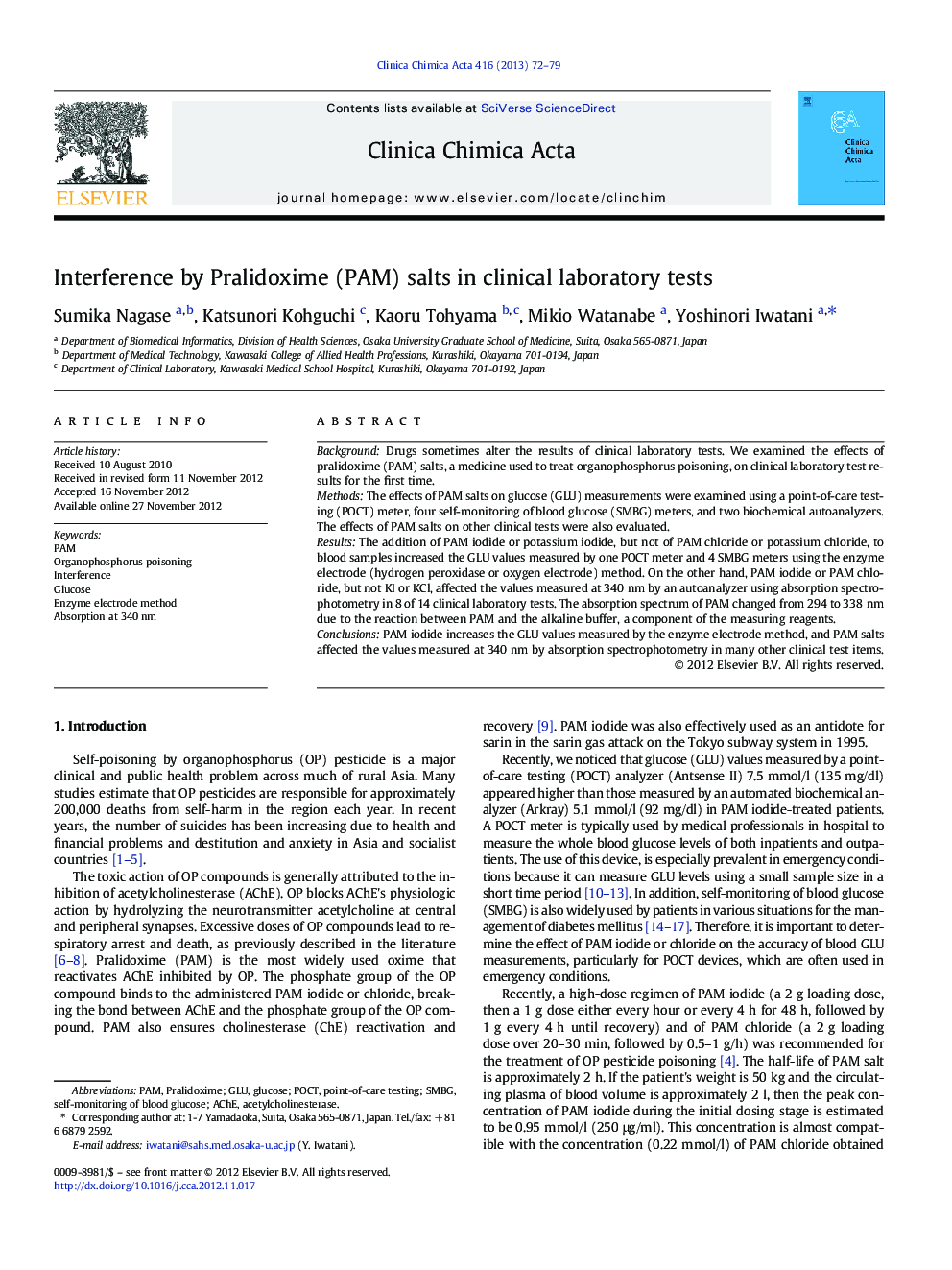| Article ID | Journal | Published Year | Pages | File Type |
|---|---|---|---|---|
| 1965780 | Clinica Chimica Acta | 2013 | 8 Pages |
BackgroundDrugs sometimes alter the results of clinical laboratory tests. We examined the effects of pralidoxime (PAM) salts, a medicine used to treat organophosphorus poisoning, on clinical laboratory test results for the first time.MethodsThe effects of PAM salts on glucose (GLU) measurements were examined using a point-of-care testing (POCT) meter, four self-monitoring of blood glucose (SMBG) meters, and two biochemical autoanalyzers. The effects of PAM salts on other clinical tests were also evaluated.ResultsThe addition of PAM iodide or potassium iodide, but not of PAM chloride or potassium chloride, to blood samples increased the GLU values measured by one POCT meter and 4 SMBG meters using the enzyme electrode (hydrogen peroxidase or oxygen electrode) method. On the other hand, PAM iodide or PAM chloride, but not KI or KCl, affected the values measured at 340 nm by an autoanalyzer using absorption spectrophotometry in 8 of 14 clinical laboratory tests. The absorption spectrum of PAM changed from 294 to 338 nm due to the reaction between PAM and the alkaline buffer, a component of the measuring reagents.ConclusionsPAM iodide increases the GLU values measured by the enzyme electrode method, and PAM salts affected the values measured at 340 nm by absorption spectrophotometry in many other clinical test items.
